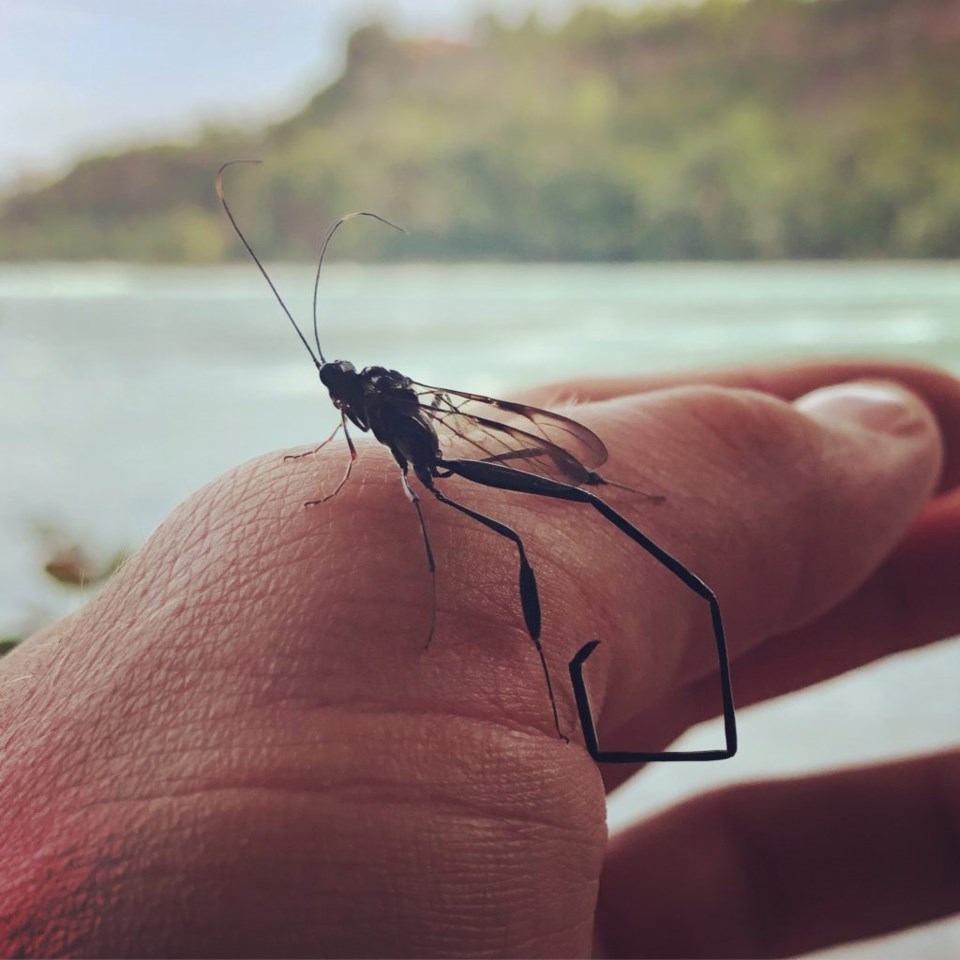
Although not officially on the calendar, it certainly feels like summer begins its graceful walkout once school comes around. Having said that, even as an employee for the school board, I barely feel like school is coming back around this time.
It’s been the oddest of odd summers! In equal parts odd, it has also been hot. I am curious as to what kind of seasonable statistics we’ll read about regarding 2020’s multiple heat waves.
By professional and leisure time, I experience what these seasons cook up insect-wise, as I take on mosquitoes and other winged menaces. Oh, and let’s not forget everyone’s favourite little arachnid, the tick.
A few weeks ago, while working at my desk, a peculiar presence made itself known on my back. I itched and flicked away at it, only to find it was a tick who had secured itself to my shoulder blade. An awkward reach, I went to the bathroom mirror and turned into a contortionist with tweezers. I got the little thing off pretty easily, and then chucked it into a mason jar to identify the biter. As usual, 99 per cent of the time, it was a harmless dog tick, versus the infamous deer tick which can potentially carry Lyme disease.
With relief, I remarked at how it has been a quiet year for ticks. Now, this can be read as a strong observation versus a scientific fact. The quiet theme was most definitely observed, but there are a few variables at play here.
That was one of two biters removed this year, which is a proud statistic for me because typically it’s many more. I simply didn’t see as many crawling around on me, on the roof of my van, or in my bed as I have in other years. I was also out in the bush just as much, if not more, than previous seasons in southern Ontario.
The tick encounters seem to have been down for both myself and many other outdoor enthusiasts and colleagues. Although ticks aren’t likely affected by our intense heat waves, such a climatic phenomenon has ripple effects for other animals in the forest. Populations of animals respond to our extreme Niagara seasons every year. An unusual excess of heat, cold, or moisture will knock some populations down while picking others up. Welcome to the world of predator-prey cycles. It’s a see-saw with species on either end, always trying to find equilibrium for the whole system.
Unlike seasons, which have a guaranteed annual cycle, populations of our local creatures can bob up and down in two-year, five-year, or 10-year cycles.
Let’s suppose it’s a challenging, dangerous winter for rabbits. This might mean that coyotes could find themselves short of food, resulting in a tougher year for their population as well. The following year, the rabbits could bounce back because there were fewer coyotes snacking on them in our vineyards, making the following season a pronounced successful one for rabbits. As for the year after, all those rabbits will feed a growing population of coyotes. That’s how the see-saw works.
Maybe birds and amphibians benefited from the quiet COVID spring, allowing these animals to clean up annoying insects and ticks really effectively this year. I sensed all around Niagara that it was a less aggressive mosquito year. The sleepy mosquito theme persisted in many of my trips up north, too. I’m definitely not complaining.
Like ticks, our mosquito friends are affected by heat and hunger. Long hot spells cause stagnant water to evaporate quicker, literally desiccating popular egg-laying spots. This could have resulted in a shortening of their breeding season. As the hot summer dries the land, sometimes mosquitoes will congregate to the deeper remaining woods and ponds as a refuge. It’s often in that stage of summer where, ironically, we don’t venture into the woods as much because we’re thinking about ticks and poison ivy.
With summer sizzling out, and mosquitoes and ticks slowly disappearing in the rearview mirror, what are some other observations you can make as we enter autumn?
Watch for wasps and hornets bouncing off your cold drink and acting a little agitated. As days and nights become cooler, these insects chew on fermented fruit from our forests and orchards. The temperature and alcohol content combo makes these flying insects a little less predictable but remember, they are just confused, and unless they are the queen of the colony, they will die this winter.
Wasps and hornets are not out hunting you. They’re actually far more interested in that sweet fruit, or perhaps other delicious insects and spiders. If you’re not a fan of wasps, know they are experts at keeping spider populations in check. If you’re not a fan of spiders, just remember how they’re one of the few who can catch and eat these aggressive stinging insects.
Ironically, the human world isn’t always in the same corner as wasps and spiders, but the wasps and spiders are always in our corner, responsibly cleaning each other up.
When you see the classic black and orange wooly bear caterpillars marching across the sidewalks over the next few weeks, you know fall is approaching.
When you hear each night get a little quieter from here to Halloween, you’re noticing the nighttime insect orchestra losing a few members. Eventually, it will be down to just one lone tree cricket in late October, telling itself that there is just one more warm night at the end of a long hot summer.


